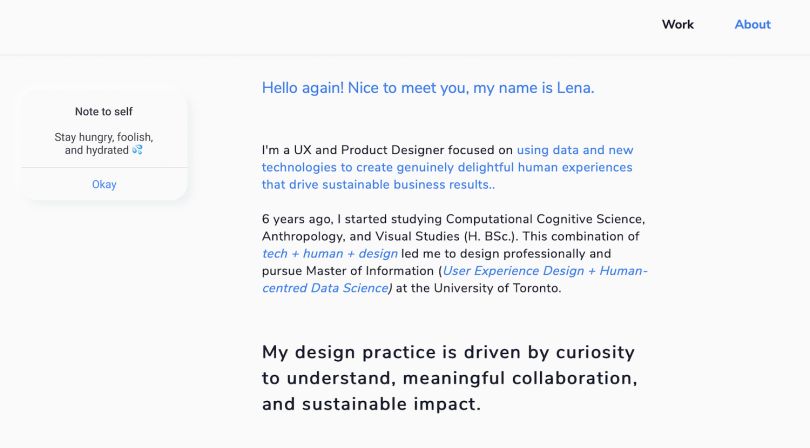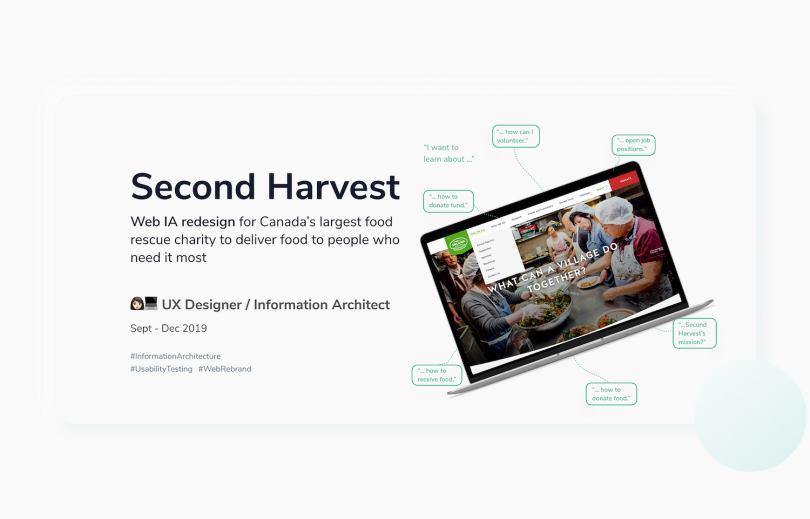Lena Zhao was feeling lost in her career. Taking a gap year amid work on her master’s degree at University of Toronto, she joined the mental healthcare startup Resili as the sole product designer, responsible for revamping the company’s core product — a free mobile app that offers bite-sized dialectical behavioral therapy skills for consumers. She enjoyed the work, but being the only designer, she felt isolated and out of touch with the broader design community.
“I wanted to connect, and I found out about ADPList,” she told me.
ADPList, the free online mentoring service co-founded by Felix Lee and James Baduor, with the support of InVision’s Design Forward Fund, allows aspiring and early-career designers to find and book online meetings with designers and product leaders from a list of more than 5,000 mentors — many at leading tech companies like Apple, Twitch, Nerdwallet, Microsoft and Coursera.
“He offered really great, honest and constructive feedback for me to improve my portfolio, as well as general career advice and resume tips.”
After submitting a short application and being accepted into the program, Zhao reached out to Federico Francioni, principal people-experience designer at Facebook. The first call was short — about 30 minutes. But it was enough time for Francioni to recognize in Zhao what he called a “glimpse of greatness.” When he offered to review her resume and portfolio, she nearly hit the floor.
“I was honestly ready to get roasted,” she said. “I just didn’t know what to expect, but Federico was super approachable and down to earth. I remember hearing him say, ‘Wow, I’m impressed,’ and I just couldn’t believe it. Then he offered really great, honest and constructive feedback for me to improve my portfolio, as well as general career advice and resume tips.”
This is the type of connection Lee hopes ADPList will foster among mentors and mentees, taking the pressure off young designers to reach out to mentors on social media, where it can be difficult to forge a meaningful connection. Roughly 40 percent of applicants are accepted into the program, which has hosted more than 4,000 one-on-one sessions since its launch in January, as well as monthly town-hall meetings.
“I want to democratize mentorships for everyone,” Lee told me. “So that anyone around the world, regardless of social status, income or race will not get skipped over. Often mentorship is tied to things like Y Combinator, a boot camp, a social network. It’s tied to clout.”
Where people are born also contributes to vast disparities in knowledge-sharing, he said. Lee started the project as a public spreadsheet while serving required military service in his birth country of Singapore. An engineer by training, he co-founded the trip-planning company Packdat and worked briefly as a design lead at investment app Gotrade, but, as a rule, he saw limited opportunity in Singapore to nurture relationships with designers at large, multinational tech companies, and even small and midsized firms.
For Zhao, speaking with a mentor has had a demonstrable effect on her career. After revising her portfolio based on Francioni’s feedback, she saw a spike in recruiter solicitations and job offers.
“He helped me reflect on the entire path that led me to this point, and then put that out there on my website to help people — even recruiters — view me as a human first before an employee,” she said. “I think that helped, because I’ve been receiving more interview invites, and also landing offers.”
Though she asked not to share the specific details, as she is in the late stages of negotiation, Zhao is poised to begin a new role in the coming weeks.

A Common Pitfall for Early-Career Designers
So why was the mentorship so successful?
One reason may be because Zhao and Francioni share similar values. Both believe that design is about more than just the elegant arrangement of pixels.
Francioni oversees the employee-experience journey at Facebook, where he interviews many design candidates. As they try to advance their careers, many early-career designers make a similar mistake, he told me, focusing obsessively on their visual or interactive design skills without connecting their work to its business impacts and their individual identities as designers.
“Your craft is your admission ticket to the ball. But you’re not going to win the ball if you just play on your craft.”
“People, especially visual and interaction designers, think that craft is the most important thing, and you will win any work with your craft,” he said. “And the reality is that is absolutely wrong. Your craft is your admission ticket to the ball. But you’re not going to win the ball if you just play on your craft.”
Another common problem is that candidates are too robotic in the way they present themselves.
“Almost everyone has a very flat portfolio that says, ‘Hey, my name is X. I’m a UX designer,’” Francioni said. “Everyone is following the scheme, because they believe it is the right format to use. And it’s not, it doesn’t add anything to your storytelling, it doesn’t make you memorable.”
Then there’s the issue of number dropping. Sure, numbers are important, but not without an accompanying narrative illustrating a project’s impact on users and performance against key benchmarks.
“Honestly, I don’t care about the numbers that you have in your portfolio,” Francioni said. “I do care how you get to those numbers.”

Self-Awareness Is As Important as Craft
Francioni made some specific suggestions for Zhao’s portfolio and CV. He advised her to clarify her school experience and prior roles. Because she had full-time experience as a UX designer, he recommended she pursue a full-time role, rather than an internship.
Her portfolio featured the mental healthcare app she retooled at Resili and three school projects: an app designed to foster connectedness in school communities, an information architecture project for a Canadian food-rescue nonprofit and a seven-day project to design a mobile mentorship app.
“I kind of just opened up myself a little more in terms of my academic background, because I kind of lucked out in my journey into product design.”
They were strong entries, Francioni said, but they lacked a cohesive focus rooted in her self-identity and personal journey as a designer. He encouraged her to emphasize these aspects of herself in a story, and she took that advice and ran with it.
“I kind of just opened up myself a little more in terms of my academic background, because I kind of lucked out in my journey into product design, with an undergraduate background in computational cognitive science, anthropology and visual studies,” Zhao said.
She also stressed her business acumen.
“I introduced specific objectives in my portfolio pieces and how I worked with cross-functional teams to achieve them,” she told me.
Finally, Zhao updated her “about” page to reflect her personal values and design philosophy. The page includes a clever note to self, presented graphically as a Post-it that reads, “Stay hungry, foolish and hydrated.” The CTA says simply: “Okay.”
Baring her personality to the world in a lighthearted way was frightening, Zhao said, but also successful — wooing the type of purpose-driven, yet personable, employers she could envision herself working with.
“It matters to me that my career grows in a direction that connects me with like-minded people who are tackling challenges that I’d be thrilled to contribute to, as well as employers and design partners who understand why my career with them means more than employment,” she said.

The Most Important Question: Who Do You Want To Be?
After the initial call, Zhao and Francioni continued to communicate over email and LinkedIn. Ongoing dialog happens with about 30 percent of his mentees, Francioni said. Some meet with several mentors on ADPList to hear diverse career perspectives or try to find a mentor whose expertise aligns with their professional ambitions. Others are interested in portfolio review or mock interviews — topics that can often be fielded in a single call.
For Francioni and Zhao, subsequent conversations have centered on Zhao’s three-to-five-year plan. Because her work at Resili included significant time coordinating with the CEO and engineers, she assumed many product management (PM) responsibilities.
“It got me thinking about how design plays a larger role than I’d once thought,” she said. “Especially for early-stage products that require a lot of design thinking to grow into well-rounded products with useful and usable features, the role of design is tied directly with the core business.”
But, for now, being a PM is not for her.
“If there’s one thing that I grill my mentees on it’s this: Who do you want to be?”
“I actually thought about the possibility of becoming a PM,” she told me. “But from the call and the communications that I’ve had with Frederico, I kind of grounded myself in the path that I’ve already taken and the path I want to go. And I am still very interested in design, more than management.”
Making intentional career choices is the piece of the puzzle that eludes many talented young designers, Francioni said. Often, designers are hyper-focused on their next positions, rather than their long-term goals.
“If there’s one thing that I grill my mentees on it’s this,” Francioni said: “Who do you want to be?”




